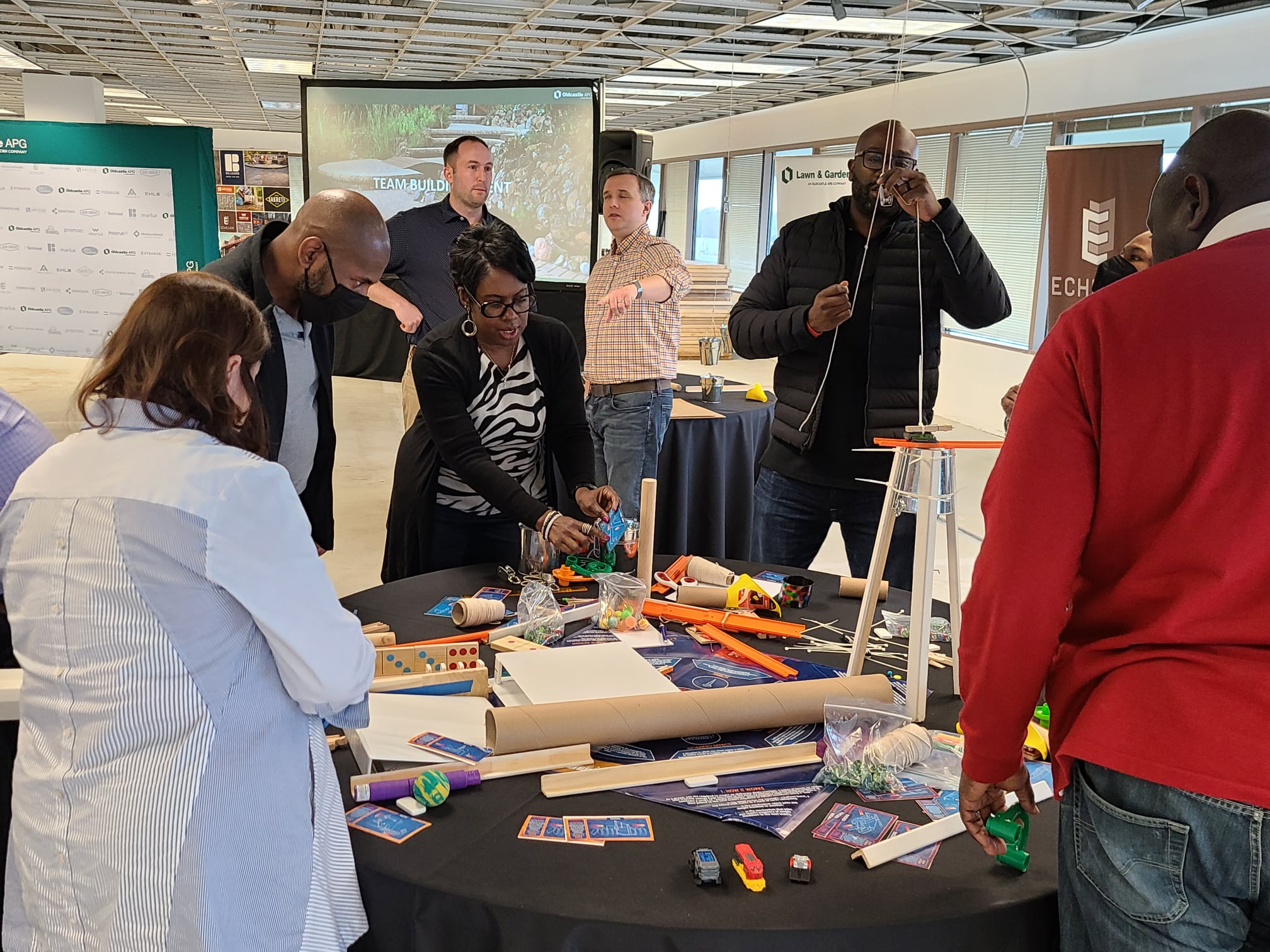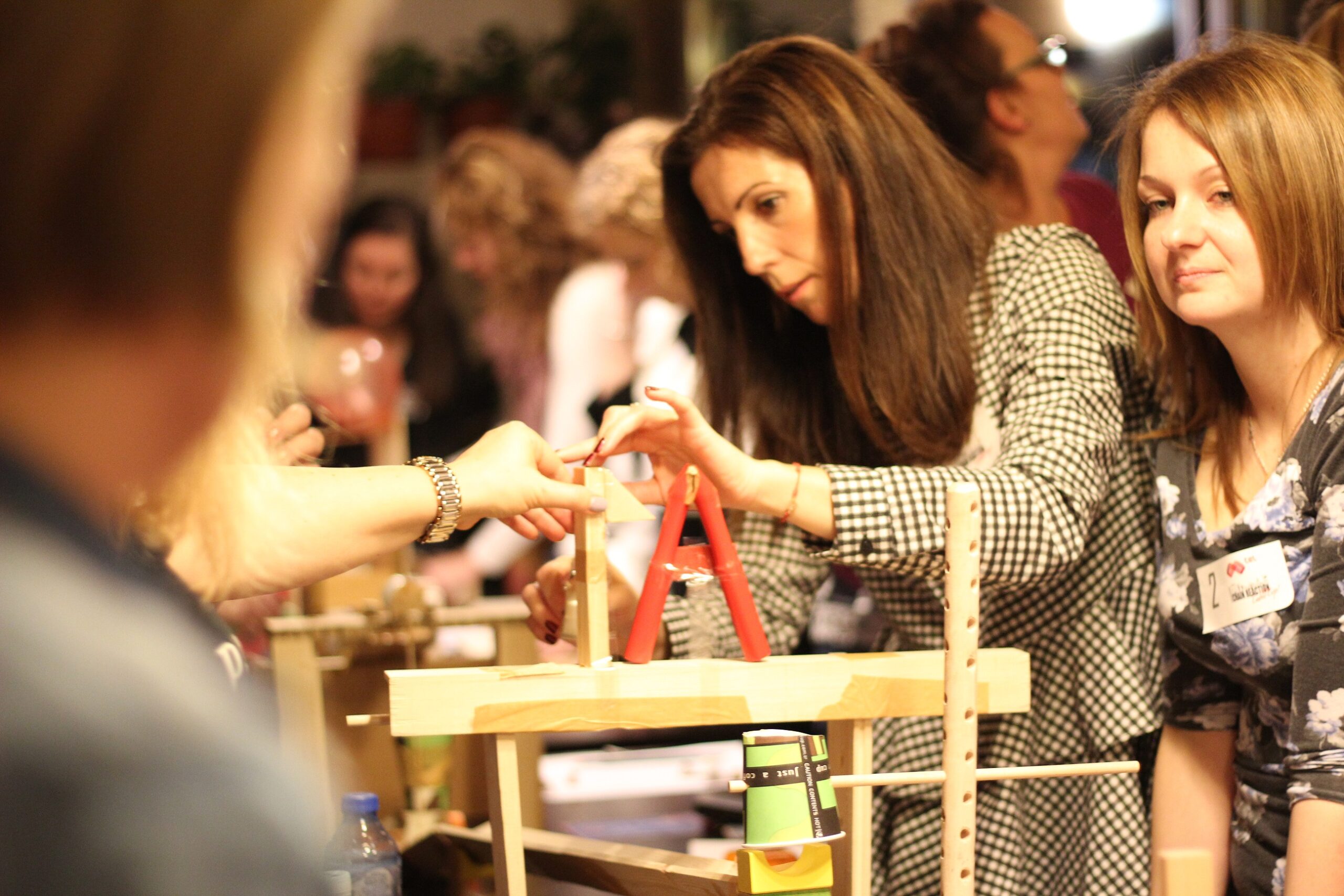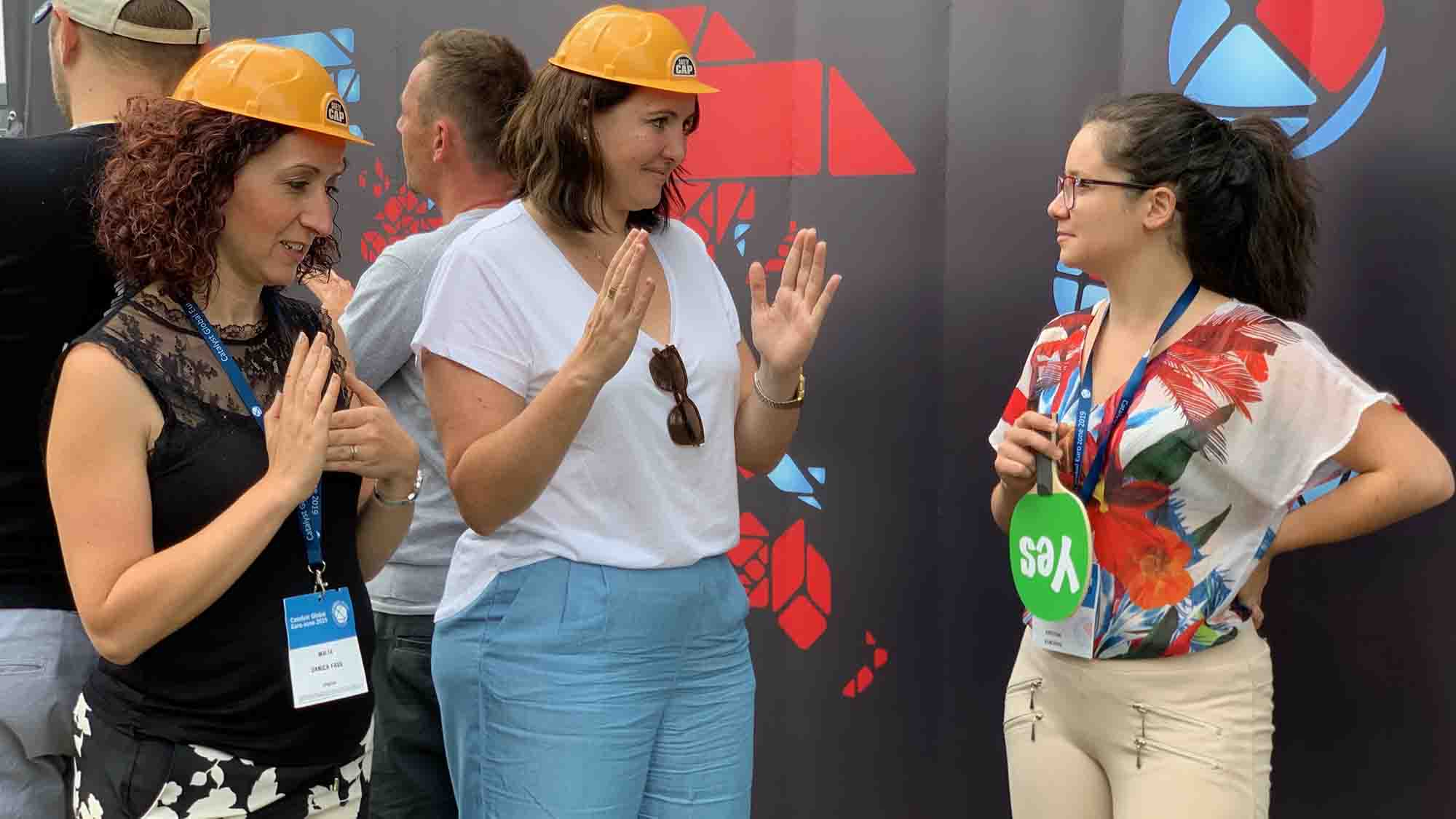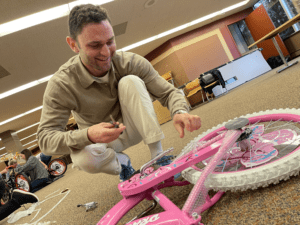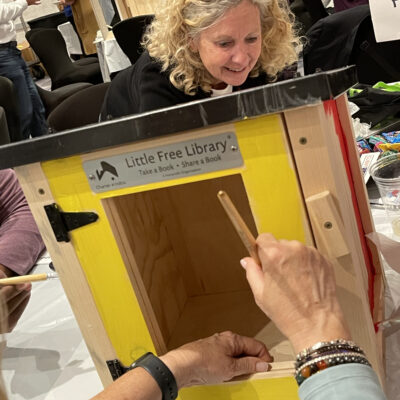We’ve all experienced the highs and lows of teamwork. A disconnected group can drain your energy and stall progress, but a team that clicks can accomplish more than anyone thought possible. When people communicate well, support each other, and chase the same goal, they create something powerful. That’s the essence of team cohesion—and it’s the difference between frustration and success.
Team cohesion transforms individuals into a trusting, aligned, and resilient unit that actually enjoys working together. When your team clicks, communication is smoother, problems get solved faster, and team members feel more engaged and committed to results.
If you have a cohesive team, nearly anything is possible. However, building a cohesive team can be a challenge. Strong teams aren’t accidental. They’re built. Ready for practical steps that strengthen those bonds? This guide has you covered.
What is Team Cohesion?
There’s no single definition of what makes a cohesive team, but at its core, team cohesion is about how well members work together and collaborate. It’s a combination of interpersonal relationships, shared goals, mutual accountability, and commitment to the group. When these elements align, you have a team ready to perform at its highest level.
An easy way to visualize a cohesive team is sports. Imagine a team on a winning streak. Each player knows their role, trusts their teammates, and gives their all to achieve a shared goal. They anticipate each other’s moves, adapt in real time, and seem almost unstoppable. That’s cohesion in action.
The same goes for teams at work (or anywhere else). Team cohesion in the workplace means your people communicate effectively, support each other’s efforts, and share responsibility for outcomes. It’s not just getting along, it’s building the kind of trust and alignment that makes extraordinary results possible.
What happens when cohesion is missing?
Picture a project team where deadlines keep slipping. Ideas get lost in a flood of emails, frustration builds, and blame starts to fly. Without cohesion, even talented individuals can underperform because they’re working in silos, not as a unified, cohesive group..

Why Team Cohesion Matters
One of the biggest benefits of a cohesive team is improved performance. When you work together effectively, you can do more than you could alone. According to Zippia, increased teamwork and collaboration can boost sales by 27% and customer satisfaction by 41%. That’s the difference between meeting your goals and exceeding them.
Data from ProofHub reinforces the value: 73% of employees say collaborative work improves their performance, and 60% believe it sparks innovation. On the flip side, 64% lose at least three hours a week to poor collaboration, and 20% lose up to six. That’s time you can’t get back.
Happier employees are also more productive. Research from the Social Market Foundation found that happy workers are up to 20% more productive than unhappy ones. Cohesion improves retention, morale, and resilience during stressful periods. It’s one of the smartest investments you can make if you want a truly cohesive working environment that supports both performance and well-being.
Why it’s especially critical now: In hybrid and remote work environments, you can’t rely on hallway conversations or casual office interactions to build bonds. Cohesion has to be intentional. And yes, you can make a fully remote team cohesive.
4 Tips for Building a Cohesive Team
Team cohesion can be challenging to build, but the payoff is worth it! These tips should help you better your teamwork and become more cohesive.
1. Communication
Communication is the foundation of any cohesive team. Without communication, you cannot have team development and cohesion. You and your team members need to be able to communicate freely, without worrying about having ideas shot down or being made fun of.
As Kit Pang, host of the BostonSpeaks series, explains in our Communication Styles podcast: “It starts with understanding how each person likes to receive communication and adapting to that.”
That small shift can dramatically improve trust, collaboration, and overall team cohesiveness. Knowing and honoring your colleagues’ preferred styles makes it easier for them to share ideas, give feedback, and fully engage.
Being able to communicate freely facilitates multiple aspects of team cohesion. For example, communication is necessary to build strong relationships with your team members. You need to talk with your teammates, learn about each other, find out their strengths and weaknesses, etc.
Research from McKinsey found that better internal communications can lead to a 25% increase in productivity, a huge benefit that can come just from communication. Yet many teams still struggle.
Challenges of Communication
Lack of Structure: If there is no clear way to communicate with people internally, it can be difficult to have necessary conversations. Things get messy when people are trying to communicate via many different platforms and methods. Having a clear communication structure for everyone to follow can help deal with this challenge.
Dismissive Responses: It’s easy to be dismissive of others’ ideas, especially when you are stressed or burnt out at work. However, constructive feedback and kindness are essential to effective communication. Your team members should be listening to each other’s ideas and helping make them better.
Cultural Differences: Though it may not seem like a big deal, cultural differences can hinder communication. Small cultural differences can slowly chip away at communication without you even realizing it. Understanding the cultural differences makes it much easier to work around them and have difficult conversations to address them.
Quick wins for better communication:
Pro tip: Build communication norms into onboarding and reinforce them regularly.
- Establish a single primary platform for daily updates.
- Create clear guidelines for response times.
- Schedule regular check-ins: weekly for projects, quarterly for big-picture alignment.
- Encourage video calls when discussing complex topics to avoid misunderstandings.
2. Setting Common Goals
Another key part of what makes a cohesive team is having common goals. Goals are what bring your team together and unite them around the same cause. Having realistic, achievable goals that everyone is striving towards together will make your team more cohesive. It can also help boost morale, improve relationships amongst team members, and increase productivity.
Using the SMART framework (Specific, Measurable, Achievable, Relevant, Timebound) ensures your goals are realistic and motivating.These criteria will help you ensure that the goals you choose are realistic, relevant, and achievable for your team. With good common goals, your team is on the path to cohesion.
Challenges of Goal Setting
Vague objectives: Without specifics, team members may interpret goals in different ways. This can cause confusion, wasted effort, and missed deadlines. Clear, measurable objectives keep everyone on the same page and moving in the same direction.
Lack of buy-in: Goals created without input from the team can feel forced or disconnected from daily work. Involving team members in the goal-setting process builds ownership and increases motivation to succeed.
Shifting priorities: In a fast-paced environment, priorities can change quickly. Without a review process, your team may continue working toward goals that are no longer relevant, leading to frustration and lost productivity.
Quick wins for goal setting:
Pro tip: Involve your team in setting and revisiting goals so they remain relevant and motivating. When people help define the target, they’re more committed to hitting it.
- Hold a kickoff meeting to align expectations.
- Document goals and share them in a central location.
- Schedule mid-point check-ins to adjust as needed.
3. Accountability, Trust, and Respect
Accountability, trust, and respect are also all key parts of building a cohesive team. Your team members need to feel like they can trust and respect each other, as well as their leaders/management. Accountability is one of the key ways to build that trust and respect. A cohesive leadership team models accountability from the top down and sets the tone for the rest of the organization.
When team members hold each other accountable, they are building trust and respect amongst each other. They know that their team members are holding themselves to the same standards and that everyone is in it together, working towards the same goals. The same goes for management, as holding themselves accountable also shows trust and respect for their teams.
Challenges to Accountability
Uneven expectations: Standards can vary across team members, leading to frustration and inconsistency. Setting clear, shared expectations ensures everyone knows what success looks like.
Fear of feedback: Some team members may avoid giving or receiving feedback, which limits growth and improvement. Encouraging a culture of constructive feedback builds trust and keeps progress on track.
Micromanagement: Over-controlling leaders can undermine trust and autonomy. Empowering team members to take ownership of their work fosters respect and accountability.
Quick wins for building trust:
Pro tip: Set clear, shared standards for accountability and model them from the top. Consistency in words and actions builds lasting credibility.
- Publicly acknowledge team contributions.
- Share regular updates on progress toward goals.
- Follow through on commitments — even small ones.
- Address mistakes openly and constructively.
4. Team Building Techniques
Lastly, team building techniques and activities are a core part of building team cohesion. Team building activities focus on developing the skills required for cohesive collaboration, as well the interpersonal relationships that are key to an effective team. These activities act as team cohesion exercises, giving your group a chance to practice collaboration skills in a safe, engaging environment before applying them back at work.
There are tons of different team building activities that focus on different aspects of teamwork and collaboration. This can help you focus on specific aspects of your team that may need improvement. They also come in all different shapes and sizes, like virtual events or in-person activities, giving you plenty of flexibility.
Examples from TeamBonding programs:
- Atmosphere: A puzzle challenge that sharpens teamwork under tight deadlines.
- Chain Reaction: Ideal for improving time management and strategic thinking.
- iBuild: Perfect for boosting communication and collaboration.
- Charity Bike Build: Combines teamwork with giving back to the community.
Challenges of Team Building
Lack of variety: Repeating the same activity too often reduces its impact and engagement. Rotating different types of events keeps things fresh and exciting.
Perceived time waste: Activities without a clear purpose can feel like they’re taking time away from “real” work. Connecting each event to specific team goals demonstrates its value.
Exclusion: Not all activities fit everyone’s schedule, abilities, or preferences. Offering a mix of formats and making accommodations ensures every team member can participate.
Quick wins for team building:
Pro tip: Always connect the activity to team goals and explain how it supports cohesion. The “why” behind an activity is as important as the activity itself.
- Rotate event types to appeal to different personalities.
- Combine skill-building with fun, like a cooking challenge that requires teamwork
- Include virtual-friendly options for remote or hybrid teams.
- Tie activities to real workplace challenges.
Overcoming Challenges to Team Cohesiveness
Even with all those tips and strategies to improve your team cohesion, there are still challenges that you may need to overcome. Even in the best teams, you can still run into issues such as personality clashes and disruptive behaviors.
Steps to address issues:
- Identify the behavior early. You need to be able to identify and address problem behaviors like being overly negative or gossiping before they become serious issues. Then, you need to communicate with those employees to address those behaviors.
- Communicate directly and constructively. Providing feedback and implementing solutions are key. Don’t just scold an employee for gossiping or being negative; give them constructive feedback that suits them, and implement strategies to change that behavior in the future.
- Address lack of engagement. It’s essential to communicate with disengaged employees and find out what’s going on. Often, there are reasons leading to their behavior such as personal issues or conflicts with team members. Identify these reasons and work to address them.
- Include everyone. Go out of your way to communicate with everyone, have them work with others, etc. This can help them get more involved and active at work.
Cohesion takes time, but research shows that cohesive teams are up to 20% more productive, and 80% of successful projects feature strong collaboration. As Kit Pang notes: “When you focus on the relationship first, the results will follow.”
Turn Your Employees into a Cohesive Team
Building a cohesive team is a must for businesses that rely on teamwork and collaboration. Cohesive teams are happier, more productive, and more effective. By focusing on communication, common goals, trust, accountability, and team building, you can build an unstoppable cohesive team.
Bring your team together with TeamBonding. Explore our team building activities and we’ll help you build a stronger, more connected team.
